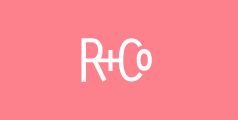


Larisa Love: Conversations in Creative Color
Colorist, salon owner and industry darling Larisa Love has cemented her claim to color fame on Instagram with an endless stream of inspiration, insider knowledge, behind-the-scenes shenanigans, and straight-to-the-point formulas and techniques.
Colorist, salon owner and industry darling Larisa Love has cemented her claim to color fame on Instagram. More than 500,000 followers scroll through her @larisadoll feed to interact with an endless stream of inspiration, insider knowledge, behind-the-scenes shenanigans, and straight-to-the-point formulas and techniques. Love’s aim on Instagram: to make hair color teachings digestible, life behind the chair more fun and artists have the confidence to take control of their craft. Here, she talks Instagram smarts, what makes a lasting trend and why the client consult is oh-so important.
You really have mastered Instagram. Do you have any great advice for colorists who are struggling with the platform?
LL: I think, for me, there's an 80/20. Show your business 80%, and then 20% personal. I think people get sick of just having a page with beautiful hair. I feel like a lot of people have that and now. People want to understand who the artist is behind that beautiful hair. So showcasing your personality and who you are 20% of the time makes a huge difference to clients. It makes you more relatable and drives clients wanting to come to you because of you and not just beautiful hair.
What would you say is your signature style?
LL: Techniques that cut application down tremendously. I feel like I found tips and tricks on my own on how to do blonding that will cut down at least half of the application time but also create beautiful blends.
**Time is definitely of the essence for colorists. **
LL: Less is more sometimes. As artists we can overdo it, and then we kind of lose that momentum of what we were trying to do in the first place because we’re taught that there's one way to do certain techniques. But, you know, when we're more strategic with our placement, this can cut out so much time and give you more beautiful outcomes.
What's one of your favorite placement trends right now?
LL: The money piece has been here for a couple of years but it's also not going anywhere. And I don't like calling it the money piece because I just feel like it sounds so desperate for money. I like to call it the hero piece. When you have any color around the face, it takes a couple of foils but it really can recreate the whole look on a client when it comes from toning. It can just really make or break a look.
Why do you think the “hero piece” is such a lasting trend?
LL: When it comes to trends, I feel like the softer the color ideal is, the more it's going to stick around. And the bolder it is, the more it's here for that trend moment—for that season. For example, back in the day, ombré was such a harsh blend from one end to the other. That was so trendy, but now when you look back and you're like, whoa, that was so long ago, that's definitely not trending now. But when it comes to something soft like a balayage or face-framing lightening, that's been here for years and years and is going to be here to stay.
You invite hairstylists to shadow you for a day in your mentorship program. What’s one thing you think they take away from the experience?
LL: Besides them wanting to learn my techniques and formulas, what I hear a lot from them is, "Oh, I wish I could do this type of color in my salon." They often come from different states where they think their clients won’t want this type of hair color, but I always tell them, “You can!” Clients will fly to you if you put your work on social media. I try to teach them that it's about the stylist; it's not about the client. Because, at the end of the day, a lot of times I offer looks to my clients that maybe they would never even have thought about but, when I offer it, I put the thought into their mind. So, I teach stylists how to be more in control of their art and the work that they want to create.
Speaking of clients: What does your consultation process look like?
LL: They text me directly and I ask them for a photo of their hair and their inspiration. I give them a somewhat rounded rate so that way they're not dumbfounded by the cost when they get to the salon. Then, we'll have a thorough consultation once they come in, and I'll really give them the detailed breakdown of the whole process so they're in full understanding of expectations and expenses. The more they understand the whole picture from the cost to the timing to their expectations, the better the experience is.
Listen to the full conversation on R+Co Talk Radio or click below to learn more.